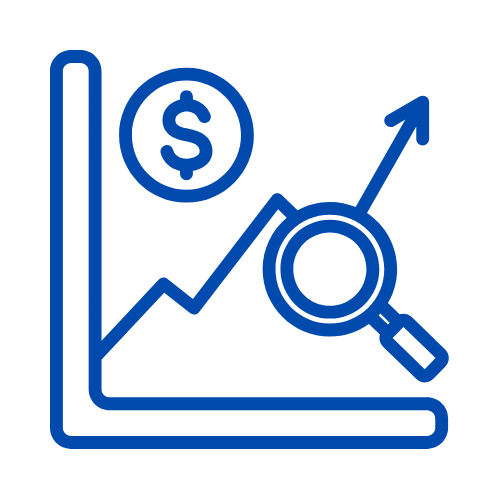Start Here — Answers by Service
Start Here — Answers by Service

Sell-Side
Advisory
Ready to explore an exit? We prepare your company, position it to premium buyers, and run a confidential, competitive process from first look to close

Buy-Side
Representation
Acquiring with intent. We define your buy box, source on- and off-market deals, and negotiate structures that protect downside and preserve upside

Business
Valuation
Know what your business is really worth. Our market-tested valuations assess earnings power, risk, and scale potential—not just formulas.

Coaching
Exit & Growth
Not ready to transact—yet? Founder-first coaching to sharpen strategy, raise enterprise value, and time your next move with confidence
Coming Soon
Sell-Side Representation
Straight answers, before you decide.
What is sell-side advisory and how does ABS run a confidential business sale?
Sell-side advisory is end-to-end guidance to prepare, position, and sell your company while protecting confidentiality. ABS builds the buyer list, creates the CIM and data room, qualifies buyers under NDA, manages bids/LOIs, negotiates structure, and coordinates diligence through close.
How long does it take to sell a lower middle-market business?
Typical timelines run 5–9 months: 4–6 weeks for readiness & materials, 6–10 weeks for buyer outreach and initial bids, 6–12 weeks for LOI, diligence, financing, and closing. Prepared sellers with clean financials move faster.
How do buyers value my company—what EBITDA multiple should I expect?
Pricing is driven by normalized EBITDA, growth, margins, customer concentration, recurring revenue, leadership depth, and perceived risk. We benchmark against private comps and run a competitive process to improve both multiple and structure (cash at close, rollover, earnout).
What information do I need before going to market?
3–5 years of financials & tax returns, TTM monthly P&L/BS, AR/AP aging, customer & product mix, org chart, key contracts/leases, IP, and operating KPIs. A superior quality of earnings (QoE) or readiness review increases buyer confidence and speed.
How do M&A advisor fees work?
ABS typically uses a modest engagement fee plus a success fee at close, aligned to deal size. No success, no success fee.
What is buy-side representation in M&A?
ABS acts as your outsourced corporate development team: define your buy box, map industries, source on- and off-market targets, open doors discreetly, and negotiate LOI, structure, and diligence through close.
How do you source proprietary deals that never hit the market?
We combine data, sector intel, founder networks, and direct CEO outreach with a credible buyer narrative. Warm introductions + targeted campaigns yield owner conversations other processes miss.
What’s a realistic acquisition timeline from search to close?
Expect 6–12 months: ~60–90 days to build a qualified pipeline, 30–60 days for LOI, and 60–120 days for diligence, financing, and definitive docs—faster for tuck-ins, longer for platform buys.
How will ABS help with deal evaluation and due diligence?
We screen for strategic fit, unit economics, integration risk, and cultural alignment, then drive diligence (financial/QoE, legal, ops, tech, HR). We model scenarios, synergy cases, and working-capital needs so you buy eyes-wide-open.
What financing structures are common for lower middle-market acquisitions?
Senior debt (including SBA for smaller deals), mezzanine or unitranche, equity co-invest, and seller rollover/earnouts to bridge gaps. We structure to protect downside and preserve upside.
Coming Soon
Buy-side representation
How we partner with strategic buyers to source and close aligned opportunities.
Coming Soon
Business Valuation
Here’s what most founders ask before trusting us with their valuation—answered with the transparency we’re known for.
How do you value a lower middle-market company (methods & multiples)?
We triangulate market multiples (EBITDA/SDE), DCF, and precedent transactions, then adjust for growth, margin quality, concentration, capex, and risk. Outcome: a defensible range tied to real buyer behavior.
What documents do you need for a business valuation?
3–5 years GAAP or tax-basis financials, TTM monthly statements, tax returns, AR/AP agings, customer/product mix, backlog, contracts/leases, and KPIs. We’ll normalize for owner add-backs and one-time items.
How long does a valuation take and what does it cost?
Most straightforward valuations complete in 3–6 weeks; complex, multi-entity, or litigation/SBA cases can run 6–12 weeks. Fees depend on scope and intended use (transaction, SBA/IRS, litigation, fairness).
What factors increase or decrease valuation?
Premiums: recurring revenue, double-digit growth, high gross margin, diversified customers, strong leadership bench, clean books, and QoE-ready records. Discounts: concentration, key-person risk, aging equipment, messy financials.
Can this valuation be used for SBA loans, estate/gift, or negotiations?
Yes—scope is tailored to the use case (market-level, calculation, or full appraisal). For sell-side, we align valuation with a go-to-market plan to convert numbers into offers.
What is exit and growth coaching and how is it different from consulting?
It’s hands-on advisory to raise enterprise value and readiness. We set measurable targets, install reporting cadence, and execute value levers that make a future sale or capital raise faster and richer.
How does coaching increase valuation before a sale?
We focus on margin expansion, recurring/contracted revenue, sales ops, working-capital discipline, leadership depth, SOPs, and audit-ready financials. The result: lower perceived risk → higher multiple and better deal structure.
Do you offer a 90-Day Pre-Sale Playbook?
Yes. A 12-week sprint covering financial cleanup, KPI dashboards, customer concentration plan, CIM/data-room prep, and buyer-ready storytelling. It de-risks diligence and accelerates time to LOI.
When is the best time to start exit planning?
Ideally 24–48 months before a target window—enough time to season improvements in your TTM. Earlier starts unlock bigger multiples and optionality.
What do coaching engagements cost and what ROI should I expect?
Fixed monthly advisory with option for performance incentives tied to value creation or transaction outcomes. Typical ROI shows up in higher multiples, smoother diligence, and fewer retrades.
Coming Soon
Coaching | Exit & Growth
Straight answers, before you decide.
Need a clear, confidential answer?
If your question didn’t make the list, send it our way. We’ll give straight, founder/owner-first guidance and point you to the right path—confidentially.
Coming Soon
Sell-Side Representation
Straight answers, before you decide.
What is sell-side advisory and how does ABS run a confidential business sale?
Sell-side advisory is end-to-end guidance to prepare, position, and sell your company while protecting confidentiality. ABS builds the buyer list, creates the CIM and data room, qualifies buyers under NDA, manages bids/LOIs, negotiates structure, and coordinates diligence through close.
How long does it take to sell a lower middle-market business?
Typical timelines run 5–9 months: 4–6 weeks for readiness & materials, 6–10 weeks for buyer outreach and initial bids, 6–12 weeks for LOI, diligence, financing, and closing. Prepared sellers with clean financials move faster.
How do buyers value my company—what EBITDA multiple should I expect?
Pricing is driven by normalized EBITDA, growth, margins, customer concentration, recurring revenue, leadership depth, and perceived risk. We benchmark against private comps and run a competitive process to improve both multiple and structure (cash at close, rollover, earnout).
What information do I need before going to market?
3–5 years of financials & tax returns, TTM monthly P&L/BS, AR/AP aging, customer & product mix, org chart, key contracts/leases, IP, and operating KPIs. A superior quality of earnings (QoE) or readiness review increases buyer confidence and speed.
How do M&A advisor fees work?
ABS typically uses a modest engagement fee plus a success fee at close, aligned to deal size. No success, no success fee.
Coming Soon
Buy-side representation
How we partner with strategic buyers to source and close aligned opportunities.
What is buy-side representation in M&A?
ABS acts as your outsourced corporate development team: define your buy box, map industries, source on- and off-market targets, open doors discreetly, and negotiate LOI, structure, and diligence through close.
How do you source proprietary deals that never hit the market?
We combine data, sector intel, founder networks, and direct CEO outreach with a credible buyer narrative. Warm introductions + targeted campaigns yield owner conversations other processes miss.
What’s a realistic acquisition timeline from search to close?
Expect 6–12 months: ~60–90 days to build a qualified pipeline, 30–60 days for LOI, and 60–120 days for diligence, financing, and definitive docs—faster for tuck-ins, longer for platform buys.
How will ABS help with deal evaluation and due diligence?
We screen for strategic fit, unit economics, integration risk, and cultural alignment, then drive diligence (financial/QoE, legal, ops, tech, HR). We model scenarios, synergy cases, and working-capital needs so you buy eyes-wide-open.
What financing structures are common for lower middle-market acquisitions?
Senior debt (including SBA for smaller deals), mezzanine or unitranche, equity co-invest, and seller rollover/earnouts to bridge gaps. We structure to protect downside and preserve upside.
Coming Soon
Business Valuation
Here’s what most founders ask before trusting us with their valuation—answered with the transparency we’re known for.
How do you value a lower middle-market company (methods & multiples)?
We triangulate market multiples (EBITDA/SDE), DCF, and precedent transactions, then adjust for growth, margin quality, concentration, capex, and risk. Outcome: a defensible range tied to real buyer behavior.
What documents do you need for a business valuation?
3–5 years GAAP or tax-basis financials, TTM monthly statements, tax returns, AR/AP agings, customer/product mix, backlog, contracts/leases, and KPIs. We’ll normalize for owner add-backs and one-time items.
How long does a valuation take and what does it cost?
Most straightforward valuations complete in 3–6 weeks; complex, multi-entity, or litigation/SBA cases can run 6–12 weeks. Fees depend on scope and intended use (transaction, SBA/IRS, litigation, fairness).
What factors increase or decrease valuation?
Premiums: recurring revenue, double-digit growth, high gross margin, diversified customers, strong leadership bench, clean books, and QoE-ready records. Discounts: concentration, key-person risk, aging equipment, messy financials.
Can this valuation be used for SBA loans, estate/gift, or negotiations?
Yes—scope is tailored to the use case (market-level, calculation, or full appraisal). For sell-side, we align valuation with a go-to-market plan to convert numbers into offers.
Coming Soon
Coaching | Exit & Growth
Straight answers, before you decide.
What is exit and growth coaching and how is it different from consulting?
It’s hands-on advisory to raise enterprise value and readiness. We set measurable targets, install reporting cadence, and execute value levers that make a future sale or capital raise faster and richer.
How does coaching increase valuation before a sale?
We focus on margin expansion, recurring/contracted revenue, sales ops, working-capital discipline, leadership depth, SOPs, and audit-ready financials. The result: lower perceived risk → higher multiple and better deal structure.
Do you offer a 90-Day Pre-Sale Playbook?
Yes. A 12-week sprint covering financial cleanup, KPI dashboards, customer concentration plan, CIM/data-room prep, and buyer-ready storytelling. It de-risks diligence and accelerates time to LOI.
When is the best time to start exit planning?
Ideally 24–48 months before a target window—enough time to season improvements in your TTM. Earlier starts unlock bigger multiples and optionality.
What do coaching engagements cost and what ROI should I expect?
Fixed monthly advisory with option for performance incentives tied to value creation or transaction outcomes. Typical ROI shows up in higher multiples, smoother diligence, and fewer retrades.
Need a clear, confidential answer?
If your question didn’t make the list, send it our way. We’ll give straight, founder/owner-first guidance and point you to the right path—confidentially.
“Great deals aren’t accidents—they come from clarity, disciplined process, and protecting the owner’s interests at every step.”
Tim. P
Founder | ABS
Let's Connect
Ready to Plan Your Next Move
Speak confidentially with a senior ABS advisor about sell-side, buy-side, valuation, or coaching for exit or growth. 35+ years of founder/owner-first dealmaking—no obligation.


